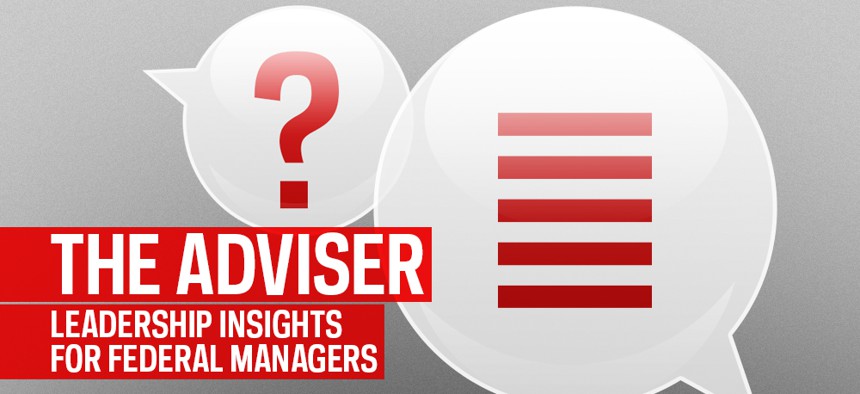Adopting Best Practices Can Be a Bad Idea
Just because it worked somewhere else, doesn't mean it will work for your agency.
Q: I have been tasked with developing a national quality assurance review program for auditing services. Can you share with me best practice metrics to evaluate these programs? Currently, regional offices and service centers are using similar metrics but with different processes for evaluating quality assurance programs.—Anonymous
Often, challenges across the federal government seem eerily familiar. If other agencies and departments have already tackled a similar challenge and have implemented a great solution, why not seek out these solutions and adopt them?
The idea of copying best practices to improve performance is not new. Indeed, it is discussed in almost every corner of government. From military logistics to education reform, look to other governmental and business entities for approaches that work. Yet, all too often, adopting best practices lowers performance instead of improves it. When is it a good idea to seek out and copy best practices, and when is it not?
Consider the goals of designing an automobile that is both safe and powerful. One way to accomplish these goals might be to purchase a Volvo, a car known for safety, and put into it the engine of a Corvette, known for its power. At first glance, inserting a high performance Corvette engine (my metaphor for a best practice capability) into a Volvo might lead us to expect an awesome car in terms of both safety and power. In actuality, the combination most likely would end up as a clunker that probably wouldn’t work or, at best, would break down easily.
Both the Corvette and Volvo are systems. Each module within the system is designed and tuned to work together and complement each other to yield a particular kind of high performance. For the Corvette, system modules like the engine, transmission, frame, axles, suspension, electronics, steering and most other aspects of the car are highly interdependent. Great performance, in this case relating to acceleration, speed and handling, requires all of these interdependent modules to be optimally designed and work together. The same is true for the Volvo, although optimization of safety and fuel efficiency within a particular cost range lead to an entirely different system.
Taking a best practice capability from one highly interconnected system and inserting it into another undoubtedly will lower performance, if the combined system works at all. Like Mary Shelly’s famous 1818 novel Frankenstein, combining modules from different systems can lead to a wretched capability. When, then, does seeking out and copying a best practice capability make sense?
I advise identifying and possibly copying best practices in four situations.
Substitutable. In some instances, a capability is modular and independent, meaning that it has few interactions and constraints with other modules in the system. In other words, the capability can be adopted without requiring mutual adjustment in other parts of the system. In most cases, a car owner can improve power performance (e.g., acceleration) by using high-octane instead of low-octane gasoline without changing any other part of the system. As an illustration in the federal government, executive leadership programs are relatively independent and modular. Switching to a superior program can improve overall performance of the agency while not requiring mutual adjustment to ongoing operations and other modules in the system.
Superb. If a new capability offers a dramatic increase in performance and value, then copying it may be worthwhile even when many interactions are present. But adopting a capability likely requires redesigning of the rest of the system. Hybrid engine technology offered high gas mileage performance, but only after the entire automobile was redesigned. In the federal government, standardized software may offer so much value (i.e., lowering software development, acquisition and maintenance costs) that it justifies the cost of redesigning business processes needed to optimize the software.
Stuck. Sometimes you have no choice. Approximately 7 percent of all health care costs are for sustaining life for those with kidney failure. Dialysis and kidney replacement affect the human body in many ways. In such a situation, adopting best practice may not be great, but it offers the only way to sustain life for many. The same may be true for some software systems. Off the shelf modules don’t fit the needs well, but designing and developing a custom solution is an order of magnitude more expensive. In this case, you may be stuck with adopting the best practice capability even though the value it can create for your agency is limited.
Solutions. In almost all instances, it is useful to seek out best practices for research, not for adopting them. Explore in detail what problems led to the development of the capability. Take away a deeper knowledge of both the nuances of the problem as well as ideas and approaches that led to the specific solution adopted. Just because FedEx and UPS are known for their leading-edge logistics capabilities, for example, does not mean that U.S. Transportation Command should copy these best practices. Instead, studying the underlying problems these firms solved and learning about their specific approaches will help U.S. TRANSCOM designers better understand and optimally resolve their own unique logistics challenges.
Best practices are capabilities designed and developed to solve specific problems that often are part of a complex and nuanced system. Copying a module from one system to put in to another system runs the risk of turning your desire for a high performance organization into a Frankenstein with the performance of a clunker. Always seek out best practices, but be skeptical about copying and adopting them.
Please share your own experiences and ideas for stimulating outside-the-box thinking or ask your leadership questions in the comment section below.
Duce a mente
(May you lead by thinking)








